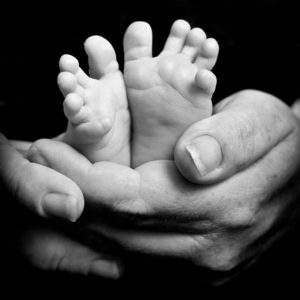Cerebral Palsy Caused by a Breech Birth
A breech birth occurs when a baby’s buttocks and/or feet are presented first, as opposed to the head. Breech births are said to account for around 4 percent of all live births, and 25 percent of all premature births.

Breech Births & Cerebral Palsy
A breech birth can increase the chances of a serious birth injury, including events which can affect the child’s blood flow and lead to brain damage. Any damage to a child’s developing brain can result in the development of neurological disorders such as cerebral palsy.
In a complete breech presentation, the baby’s buttocks and both feet will be pointing downward with the legs folded at the knees. In a “frank breech” presentation, the buttocks are pointing downward while the legs are sticking straight up with the feet close to the baby’s head. In an incomplete or “footling breech” position, one or both of the child’s feet will point downward and present before the rest of the body.
If there is too much or too little amniotic fluid in the womb, the baby might not be able to reposition itself, resulting in a breech delivery. At the same time, pelvic contraction problems (as well as poor placental positioning) can all play a role in increasing the chances of a breech delivery.
A fetus will usually rotate so that their head is facing the opening of the cervix by the 32nd week of gestation. This occurs naturally, but there are times when this does NOT happen for a number of reasons. Doctors should carry out ultrasound exams during the final weeks of pregnancy to make sure that the baby’s head has turned, and to offer solutions (such as a c-section delivery) should they have any concerns.
How a Breech Birth Can Result in Cerebral Palsy
A breech presentation can dramatically increase the chances of a serious birth injury occurring during delivery. Without proper medical care, a breech birth can result in injury to the brachial plexus nerves, broken bones, fetal asphyxia, and permanent brain damage.
Due to this unnatural breech position, a baby’s umbilical cord may become compressed or prolapsed as it fights to get through the canal with the baby in tow, cutting off oxygen supply to the brain for several minutes. If the umbilical cord becomes entangled around the baby’s neck (a phenomenon known as nuchal cord), a breech birth could also significantly increase the chances of fetal asphyxia leading to brain damage and cerebral palsy.
A breech presentation may also necessitate the use of forceps or vacuum extraction. When used incorrectly (or with too much force), these tools can compress the child’s skull and brain, leading to permanent damage or malformation of the brain.
Was Medical Malpractice to Blame?
Not every birth injury is caused by medical malpractice, but if you feel as though your child’s injuries were caused by treatment which fell below the accepted standard of practice in the medical community, you may wish to discuss the facts of your case with a cerebral palsy birth injury lawyer.
Physicians are charged with the responsibility of ensuring that babies at risk of a breech birth are repositioned prior to delivery (if possible), or that every reasonable precaution is made to limit the risk of injury to the child (such as scheduling a C-section). Failing in this regard can open themselves up to legal liability. These types of claims can be difficult to bring in many states, which is why we strongly suggest speaking to an experienced attorney about your potential legal options.
